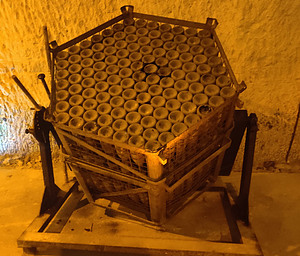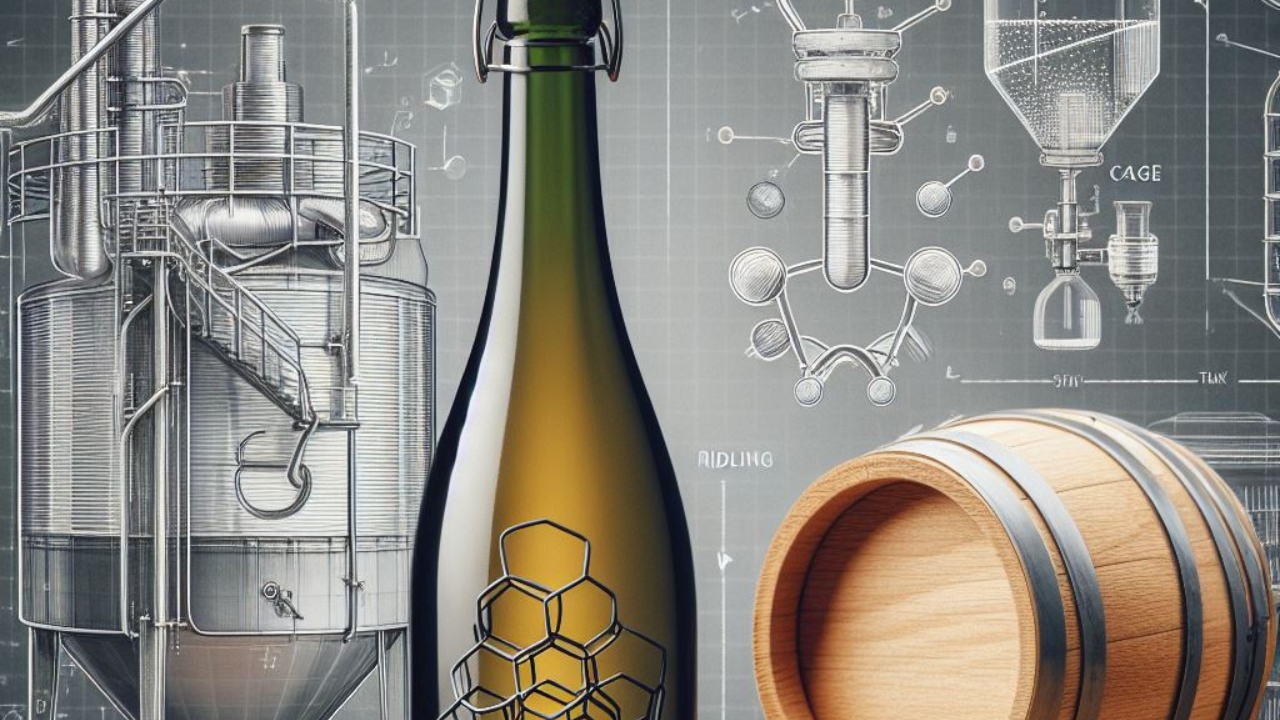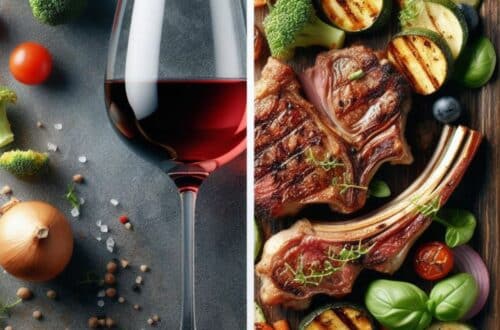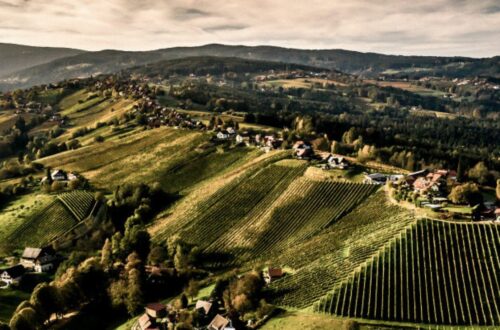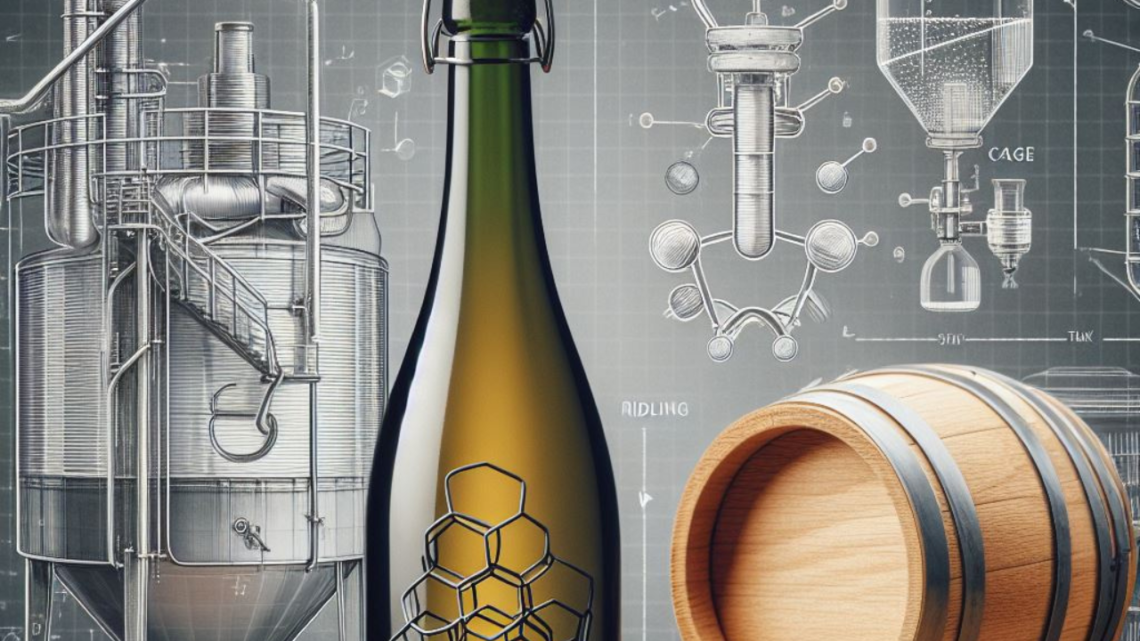
What is the Sekt method?
In Austria, the production of “Sekt” encompasses various methods, including both the traditional and Charmat methods. There are two distinct categories of “Sekt” available: “Österreichischer Sekt” and “Sekt g.U.”
“Österreichischer Sekt” lacks a specific geographical indication, whereas “Sekt g.U.” holds a controlled designation of origin. “Sekt g.U.” carries a higher status and must adhere to specific production and quality requirements.
The traditional method
The traditional method, also known as the méthode champenoise, is the most complex production method for Champagne, Sekt, or sparkling wine.
Yeast and dosage liqueur (a type of sugar) are added to the wine, which is then bottled and capped with caps. The second fermentation takes place in the bottle. The yeast converts the added sugar into alcohol.
The carbon dioxide that is produced cannot escape, but instead combines with the wine, creating a pressure of 5 to 6 bar in the bottle. After the fermentation process, the sparkling wine is aged “on the lees.” The longer the aging, the finer the bubbles become.
To remove the yeast after the maturation of the sparkling wine, the bottles are placed upside down in riddling racks. The yeast then settles on the bottle walls. The bottles are turned a small fraction each day (riddling) and gradually brought upright. This riddling process is typically performed about 32 times, causing even the finest yeast particles to collect in the bottleneck. This process can take up to six weeks or more.
The riddling process can be significantly accelerated using gyropalettes: the bottles (500 or more) are placed in a cage-like frame and rotated and gradually brought upright at regular intervals, causing the yeast to accumulate in the neck in a matter of days.
The sparkling wine can then be disgorged, meaning the yeast is removed. Typically, the bottleneck is submerged in a cold brine bath, freezing the yeast.
Then, the bottle is opened, and the yeast plug is ejected from the bottle due to the pressure built up during the second fermentation.
Before corking the bottle with a natural cork stopper, the dosage liqueur is added according to the desired sweetness and taste for the final product.
If you prefer videos, I attached one at the end of the post.
The process of transfer (partial bottle fermentation)
During the transfer process, the second fermentation takes place in bottles, similar to the traditional method. After the second fermentation and a period of yeast aging, the contents of the bottles are collected in pressure tanks.
The yeast sediments and suspended solids are removed through filtration before the addition of dosage liqueur and rebottling, instead of using riddling and disgorging as in the traditional method.
This production method is primarily used for special formats.
The Charmat Method
The base wine for the production of sparkling wine is also supplemented with yeast and dosage liqueur. In large pressure tanks, the base wine undergoes its second fermentation, which converts sugar into alcohol and carbon dioxide.
After the maturation process, the brut sparkling wine is filtered and chilled for 2 to 3 weeks. It is then infused with the corresponding dosage liqueur and bottled using a special pressure bottling machine.
This method is used for entry-level sparkling wines that are meant to be consumed young or emphasize fruity flavors as their main characteristic.
The different dosage levels in Sekt
The terms such as “brut” and “extra brut” are used to denote the amount of residual sugar in the sparkling wine.
The sugar content varies based on the designation:
- brut nature/brut zero contains 0-3g/L
- extra brut/extra herb ranges from 0-6g/L
- brut/herb has 0-12g/L
- très sec/extra trocken/extra dry falls between 12-17g/L
- sec/trocken/dry/secco ranges from 17-32g/L
- demi sec/halbtrocken/medium dry/semi secco has 32-50g/L
- doux/mild/sweet/dolce indicates over 50g/L of residual sugar.
These terms help indicate the level of sweetness in the sparkling wine, with brut nature being the driest and the sweetness gradually increasing as the sugar content rises, culminating in the sweetest designation of “doux” or “sweet” with over 50g/L of residual sugar.
The different quality levels in Sekt
In 2016, the Austrian Sparkling Wine Committee, known as the “Österreichisches Sektkomitee,” collaborated with the Committee of Sparkling Wine Producers, which included experts from Weinbauverband, the Federal Chamber of Economy, AWMB, and the Federal Ministry of Agriculture, to develop new regulations aimed at establishing the protected designation of origin for Austrian sparkling wine, Österreichischer Sekt.
According to these regulations, Austrian sparkling wine with protected designation of origin (“Sekt g.U”) can only be marketed under specific designations, namely “Klassik,” “Reserve,” or “Grosse Reserve,” as defined in the corresponding ordinance.
The marketing designation must include the category (quality sparkling wine or Sekt), the name of the protected designation of origin (administrative region, and if applicable, the municipality or part of the municipality), and the mention of “geschützte Ursprungsbezeichnung” or “g.U” (protected designation of origin).
There is also the possibility to include the additional mention of “Hauersekt.”
To qualify for the marketing designation “Sekt g.U Klassik” certain prerequisites must be met. The base grapes must be harvested from a single administrative region, the wine must undergo lees aging for a minimum of 9 months, regardless of the production method used, and the alcohol content must not exceed 12.5% by volume.
For the marketing designation “Sekt g.U. Reserve” the following prerequisites apply: the grapes must be harvested and pressed within a single administrative region, and hand-picking and pressing of whole clusters are mandatory. The wine must be aged for at least 18 months on lees, and it must be produced exclusively using the traditional bottle fermentation method, known as the “Méthode traditionnelle.” The maximum allowed residual sugar content is 12g/L.
Regarding the marketing designation “Sekt g.U. Grosse Reserve” the grapes used must be harvested and pressed within a single commune, with obligatory hand-picking and pressing of whole clusters. The wine must undergo a minimum of 30 months of lees aging and must be produced using the traditional method. The maximum allowable residual sugar content is 12g/L. It is mandatory to indicate the commune, and an additional indication of Grosslage (grand cru) or Ried (single vineyard) is also possible.
Conclusion : What is the Sekt method?
All in all, there is no “Sekt method” but there are three different methods.
The traditional method, also known as the méthode champenoise, is a complex production process for Champagne, Sekt, or sparkling wine. It involves adding yeast and dosage liqueur to the wine, undergoing a second fermentation in the bottle. The carbon dioxide produced creates pressure, and the wine is aged “on the lees” to enhance its quality. Riddling racks and gyropalettes are used to remove yeast sediment, followed by disgorging and the addition of dosage liqueur before corking.
The transfer process, also known as partial bottle fermentation, involves a similar second fermentation in bottles. After aging on the lees, the wine is collected in pressure tanks, filtered, and then undergoes dosage liqueur addition and rebottling, eliminating the need for riddling and disgorging. This method is typically used for special formats.
The Charmat method involves adding yeast and dosage liqueur to the base wine, followed by a second fermentation in large pressure tanks. After maturation, the sparkling wine is filtered, chilled, infused with dosage liqueur, and bottled using a special pressure bottling machine. This method is commonly used for entry-level sparkling wines with a focus on youthful consumption and fruity flavors.



